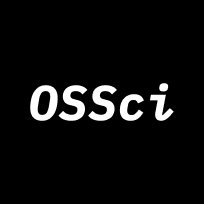The Map of Open Source Science, now in Neo4j. Now in 3d.
First, a quick slideshow of what happens when we connect the recently added 20,000+ nodes related to scikit-learn to the wider ecosystem.
Scikit-learn on the right, the rest of the NumFOCUS ecosystem on the left.
You can see some connecting nodes that contribute to both the scikit-learn ecosystem and other aspects of the NumFOCUS ecosystem.
Here is one such connection. The edge exiting the right of the screen is going to scikit-learn.
MOSS Updates
Words do not do justice to the amazing developments made on MOSS over the past 2 weeks. So here are some screenshots. None of this would be possible without Mark Eyer’s contributions.
While we work to build out our Neo4j database and subsequent visualizations, we continue to push Kumu to its limits. This is the complete rendering of the interactive map so far: 50,000+ nodes, tens and tens of thousands of relationships.
This is a similar rendering of MOSS, but in the Neo4j browser.
We transitioned from the Neo4j browser via a docker instance to the Neo4j Desktop application and Bloom visualization tool.
The beginnings of MOSS in 3d. The red system is scikit-learn. The orange system is the Bioconductor dependency graph. The green systems are other projects and their contributors.
The first 3d rendering of the NumFOCUS ecosystem.
The above images all show about 50,000 nodes. We are currently processing hundreds of thousands of additional nodes related to three specific systems:
Project → papers that cite the project → authors of the papers → institutions to which the authors are affiliated — just like we did with scikit-learn
Academic institutions → repos associated with the institution
Academic institutions → people associated with the institution
Here’s a preview.
Well over 50,000 projects, papers, authors, and institutions.
200,000 nodes.
We can’t wait to explore the emerging connections of these systems.
We also expect the need to reexamine our data structure in the near future. What a perfect time for you to get involved!
jon@numfocus.org










